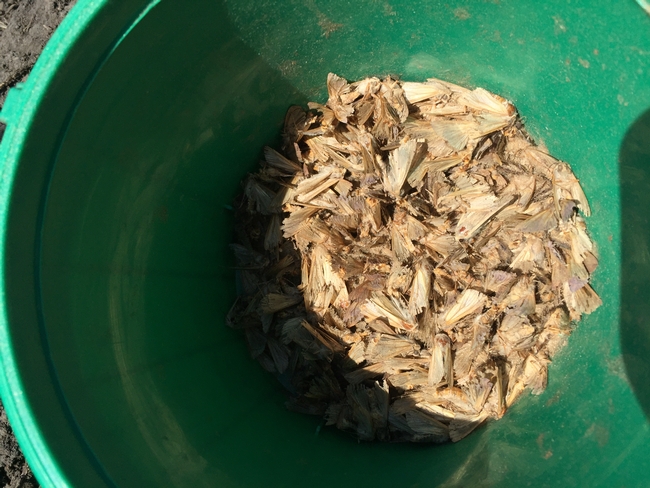The 2017 season was marked by weather extremes, including record winter rainfall and high summer temperatures. Despite those, Delta rice growers generally observed an average to above-average season. Total acreage for the Delta south of the Yolo Bypass was roughly 2900 acres. For some growers, acreage was up because they were able to get ground preparation done early, but for others, acreage was down because the ground was late to dry out. Most of the Delta acreage is in San Joaquin County, with a few hundred acres in the “tail” of Sacramento County. The acreage was entirely drill-seeded, as is typical for the Delta, and planted with M.206.
Annual rainfall (October 1, 2016 to September 30, 2017) for the region varied greatly by location. CIMIS stations for the south Delta reported rainfall from 16 to 20 inches, but stations in the north Delta reported 28 to 38 inches. Most of this rainfall fell in October through January. Spring rainfall lingered into the month of April, but accumulation of at least a tenth of an inch ceased by mid-April. Given the high organic matter content of many Delta soils, fields generally dried out for on-schedule planting in late-April through early-May, with few exceptions.

Cooler temperatures in the Delta, compared to the Sacramento Valley, make the Delta a challenging place to grow rice. The summer of 2017, however, brought many days over 100°F. This varied greatly by location, with some areas in the north Delta having approximately 10 days over 100°F and areas of the south Delta having 25 days over 100°F, according to CIMIS stations. Hot days meant warmer nights, which was a good thing for Delta rice culture. Delta rice can experience blanking due to low night-time temperatures, influenced by Delta breezes. We expect blanking to occur when the developing pollen grains are exposed to night-time temperatures at or below 55° F for several hours. Across four Delta CIMIS stations, the average minimum temperature from August 1st to September 15th was 60°F.
Harvest was generally on-schedule and occurred from late-September to early-October. Anecdotally, yields were up and averaged over 90 cwt/acre. Growers suspect that the higher summer temperatures (including higher night-time temperatures) resulted in less blanking and higher yields.
Overall, Delta rice growers had an average to above-average year as we close out 2017. Let's hope for a similar 2018.